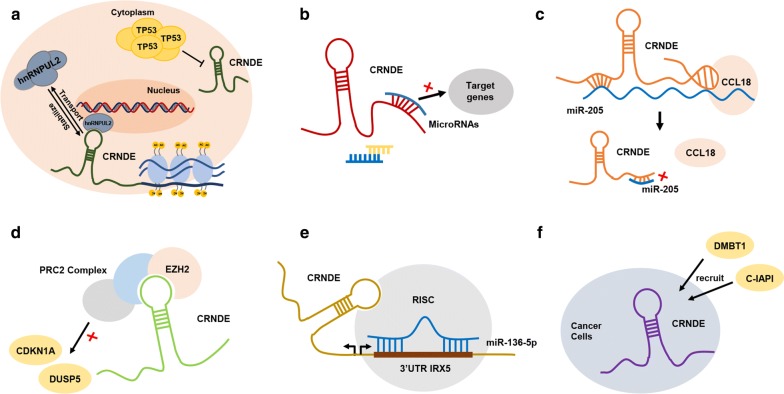Fig. 5.
a The high specific expression of CRNDE in cancers may be a process of dynamic homeostasis. The histone acetylation in the promoter region accounts for the upregulation of CRNDE, hnRNPUL2 accumulating in the cytoplasm further stabilizes the mRNA level of CRNDE, while accumulation of the TP53 protein inhibits the expression of CRNDE. b CRNDE enhances tumorgenesis by acting as a molecular sponge or ceRNA via negatively targeting miRNAs, and then mediating its downstream target genes. c CRNDE binds to miR-205 and CCL18, and promotes cancers progression by sponging miR-205 and releasing CCL18. d CRNDE epigenetically suppresses the expressions of DUSP5and CDKN1A by binding to EZH2 (the key components of PRC2). e CRNDE impairs miR-136-5p expression in a RISC manner, and a reciprocal repression feedback loop is possible between CRNDE and miR-136-5p, while the neighboring mRNA of CRNDE is IRX5, which is a downstream target gene of miR-136-5p. f CRNDE acts as a scaffold to recruit the DMBT1 and c-IAP1 to help them make a difference

